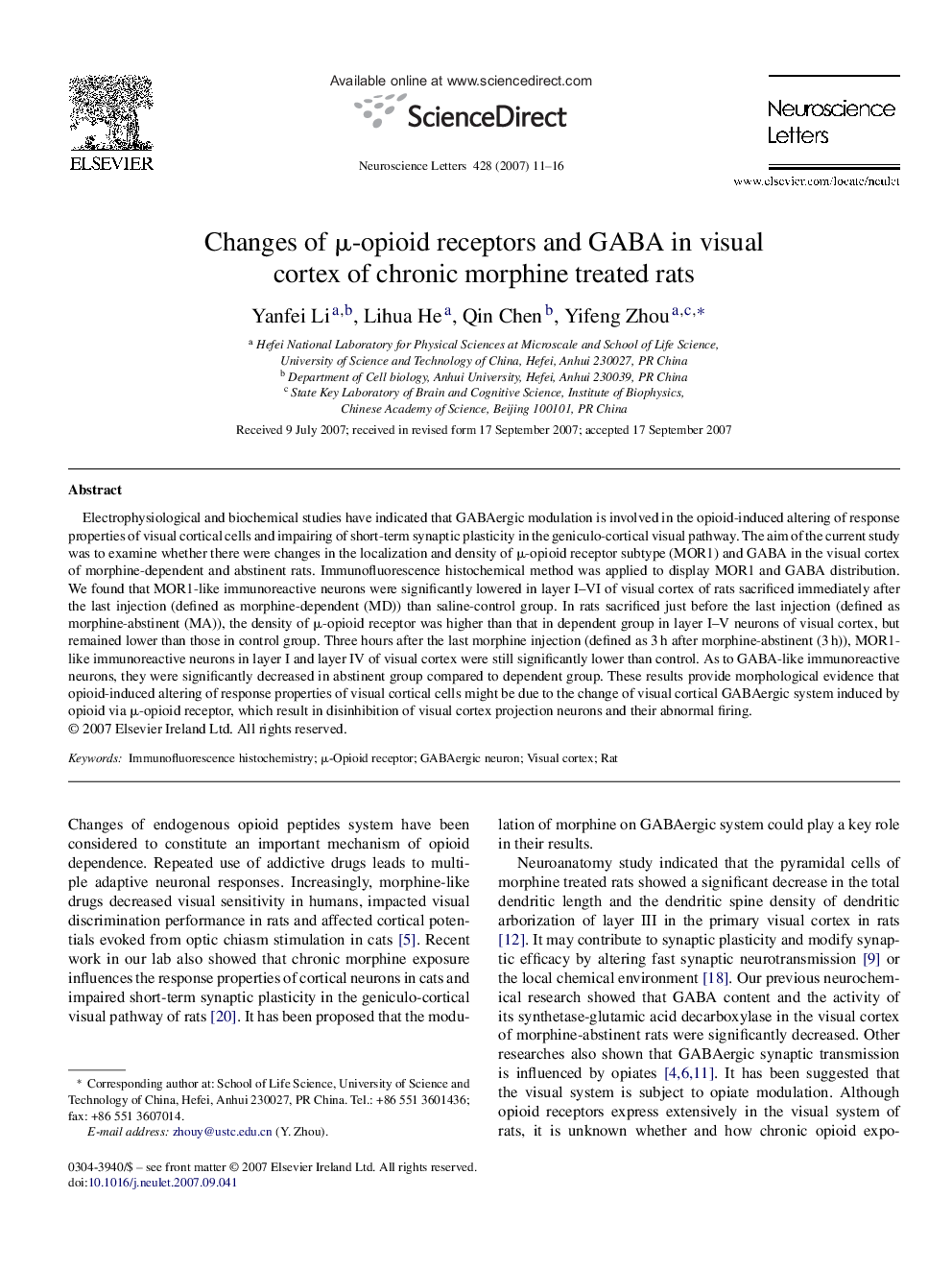| Article ID | Journal | Published Year | Pages | File Type |
|---|---|---|---|---|
| 4348940 | Neuroscience Letters | 2007 | 6 Pages |
Abstract
Electrophysiological and biochemical studies have indicated that GABAergic modulation is involved in the opioid-induced altering of response properties of visual cortical cells and impairing of short-term synaptic plasticity in the geniculo-cortical visual pathway. The aim of the current study was to examine whether there were changes in the localization and density of μ-opioid receptor subtype (MOR1) and GABA in the visual cortex of morphine-dependent and abstinent rats. Immunofluorescence histochemical method was applied to display MOR1 and GABA distribution. We found that MOR1-like immunoreactive neurons were significantly lowered in layer I-VI of visual cortex of rats sacrificed immediately after the last injection (defined as morphine-dependent (MD)) than saline-control group. In rats sacrificed just before the last injection (defined as morphine-abstinent (MA)), the density of μ-opioid receptor was higher than that in dependent group in layer I-V neurons of visual cortex, but remained lower than those in control group. Three hours after the last morphine injection (defined as 3 h after morphine-abstinent (3 h)), MOR1-like immunoreactive neurons in layer I and layer IV of visual cortex were still significantly lower than control. As to GABA-like immunoreactive neurons, they were significantly decreased in abstinent group compared to dependent group. These results provide morphological evidence that opioid-induced altering of response properties of visual cortical cells might be due to the change of visual cortical GABAergic system induced by opioid via μ-opioid receptor, which result in disinhibition of visual cortex projection neurons and their abnormal firing.
Related Topics
Life Sciences
Neuroscience
Neuroscience (General)
Authors
Yanfei Li, Lihua He, Qin Chen, Yifeng Zhou,
